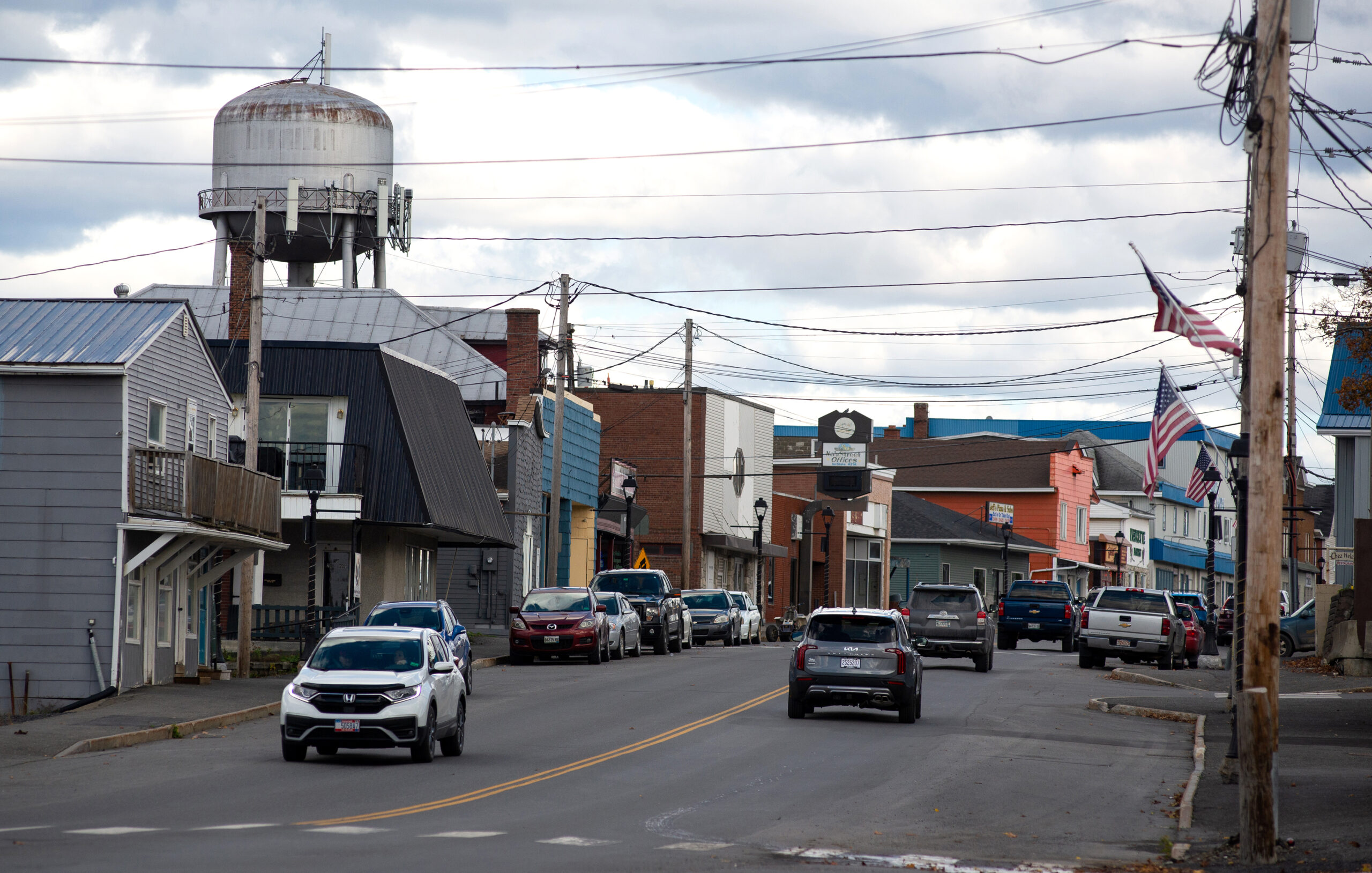
MADAWASKA, Maine – The Maine Department of Transportation recently hosted their second public meeting in Madawaska for the Village Partnership Initiative — a program in which significant improvements are made to historic downtown and village center areas to improve walkability, safety, and the overall aesthetic.
Madawaska is one of three St. John Valley communities involved in the program, along with Van Buren and Fort Kent.
MaineDOT Regional Planner Jarod Farn-Guillette hosted the meeting. He said the program lets DOT leverage federal discretionary funds to create once in a generation improvements to local communities.
Since the first public hearing in Madawaska, Farn-Guillette said they made several changes to the initial plan, including updating the design to better match the town’s new international Port of Entry facility. Other changes include revising Mill Street intersection to better accommodate large trucks, providing on-street parking near Tim Hortons on Main Street, additional sidewalks, and a revised recreational trail design on Gerard Street.
Farn-Guillette said this would be considered a large project, with a budget likely over $10 million. The town and state are responsible for 10 percent each, and the federal government covers the remaining 80 percent.
One resident asked how much control this would give the federal government over the project, since they are funding the majority of it.
Farn-Guillette said that the project would need to adhere to federal and state laws and guidelines and Maine DOT still has ultimate control of the project. He added that part of the reason for holding the public hearing is to ensure they’re able to incorporate feedback from residents.
The Madawaska project covers about 2.8 miles on Route 1, going from the Frenchville town line to Gagnon Road. It also covers Bridge Avenue, 5th, 7th, and 19th avenues, Spring Street, French Street, and Gerard Street.
After performing a safety audit last year, Farn-Guillette said that while Madawaska did not have any high crash locations, the town did see six pedestrian crashes over the past decade within the study area. These crashes happened during daylight hours without any snow or rain, he added.
To remedy this, he said they are looking at improving intersections and implementing traffic calming measures such as bumpouts to prevent similar incidents.
With regards to the pedestrian accidents, one resident noted the poor visibility near the intersection of 11th Avenue and Main Street, which is also a high traffic area, saying most of the accidents likely occurred here. Farn-Guillette said they would look into improving visibility there.
Another resident cited how Madawaska is a mill town that sees frequent traffic from large vehicles, and asked if anything is being done to minimize compression to the surface of the pavement. Farn-Guillette said part of the project will involve rehabbing and doing mill and fill work to address rutting in the downtown area.
St. John Valley Chamber Executive Director Jessica Blalock asked if the project will be tackled all at once, or section by section, and if the DOT will communicate with business owners when work is taking place directly in front of their establishments.
Farn-Guillette said that while the DOT can’t provide financial support to compensate for business lost due to the project, they will be assisting businesses with large “Open For Business” signs and through temporary wooden sidewalks during construction.
“We don’t want to completely shut things down, but there will be a bit of a disruption in flow for a period of time, but that’s with any construction project,” he said.
Madawaska Town Manager David Daigle said that, if all goes well, the public feedback from the meeting will help create a project that the majority of residents can support.
Farn-Guillette said at the meeting that construction would likely start in 2028 or 2029, at which point the town’s 10 percent match would be needed. He said they will also help the town access different funding sources and can also work with communities via deferred payment plans.
The next steps for the project include creating a final project draft based on public feedback. The town would then move forward with preliminary engineering, followed by both the town and MaineDOT applying for federal funding. After this, the project will be built.







